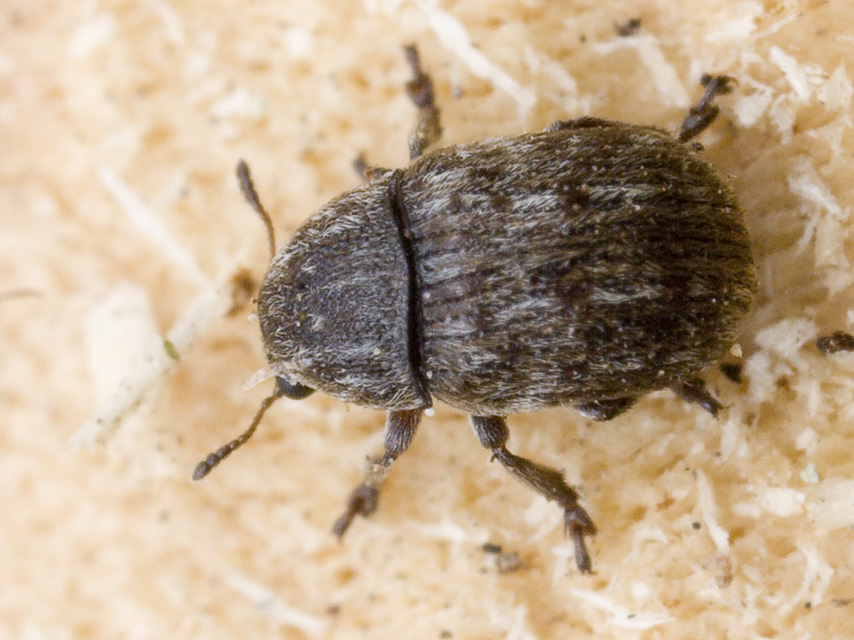
Anthribus nebulosus · netikrastraublis
- Brachytarsus nebulosus (J.R.Forster, 1770)
- fungus weevil
- Gemeiner Schildlaus-Breitrüssler, Grauer Schildlaus-Breitrüssler
- havuloiskärsäkäs
- krótkostopek miechunowy
- grå sköldlusbagge
Typical habitats are coniferous, and to a lesser extent deciduous, woodland and wooded parkland, and adults may be found year-round; they are mainly diurnal. They are active over a long season from April or May and spend the winter under bark or in crevices, often in numbers. Unusual among the family, members of this genus are predators of various scale insects (Hemiptera, Coccoidea) which infest a range of trees and shrubs but conifers seem to be preferred and, at least in northern Europe, they are most common on spruce (Picea). Following their emergence in the spring both sexes feed for a while on soft scales before mating, this occurs close to scale colonies and lasts for about twenty minutes, after which the female will begin searching for suitable oviposition sites, here she will examine scale insect brood pouches with her antennae to ensure they have not already been parasitized and, after choosing a suitable host, will bite a small hole into the underside and insert a single egg. Oviposition continues into the summer and each female will produce between twenty and thirty eggs. Larvae emerge after a few days and feed on host eggs within the pouch, they develop rapidly and will generally consume all the eggs present, the duration of each of the three larvae stages depends on the host species and on the number of eggs present but the first two stages take about a week each while the last stage may take a few days longer. Pupation occurs within the host egg pouch and this stage lasts on average for eight days.
unsure, Bruchinae probably?
Vilnius, miškas šalia Kaišialakių karjero.
0010
0 comments
Add a comment